Air Pollution: Kampala
Presented by Mike Smith, University of Sheffield
michaeltsmith.org.uk
m.t.smith@sheffield.ac.uk
@mikethomassmith
Why does it matter?
In 2012, harm equivalent to 2.6 million deaths, due to outdoor air pollution (mostly heart disease or stroke).
Summary: Air pollution is a big deal (similar scale as malaria?).
Note: We'll focus on PM2.5.
WHO press release 2014: http://www.who.int/mediacentre/news/releases/2014/air-pollution/en/
How bad is it?
Only two papers about Kampala's air quality (Stephan Schwander's group), and a new sensor at the US embassy.
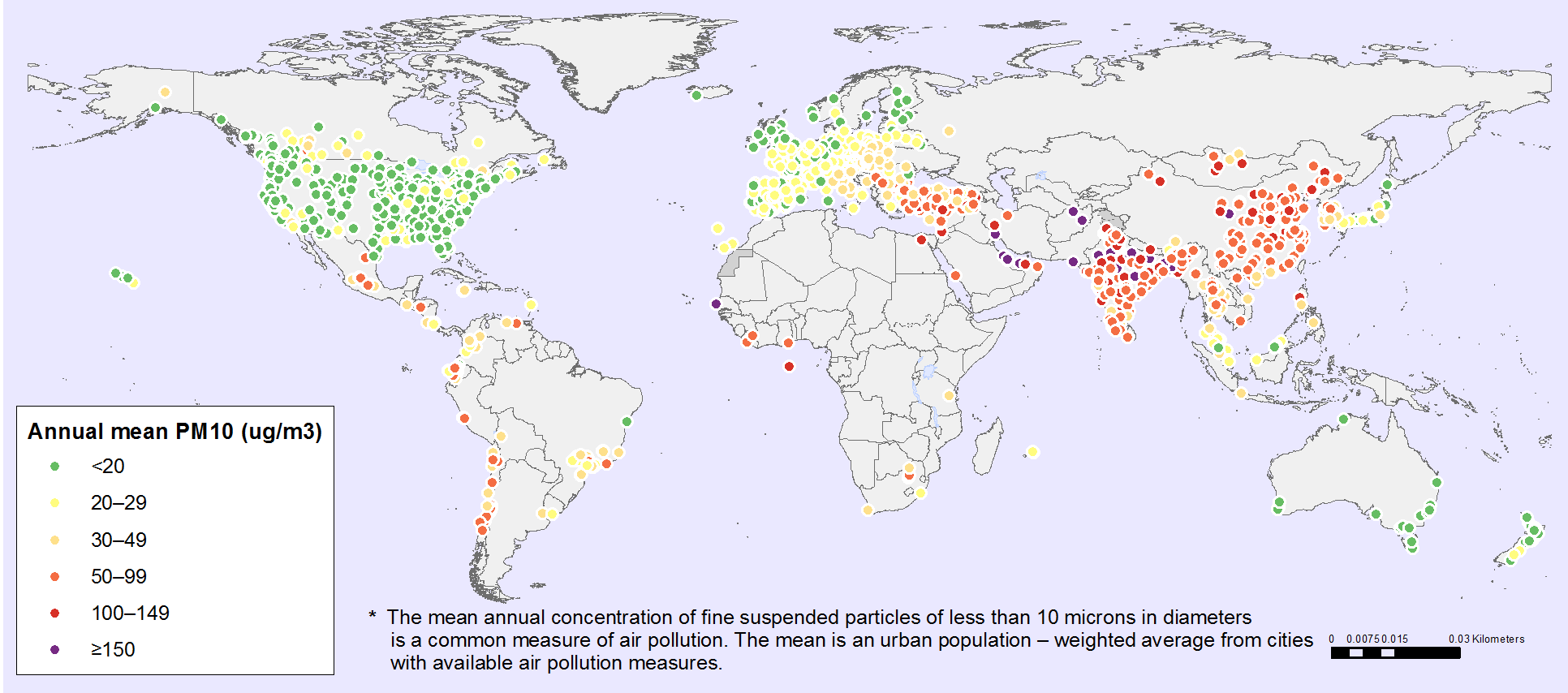
(white board)
US Embassy sensor

- Manchester average PM2.5 (at 4 sites): 8-16 $\mu g/m^3$ (2011-2015)
- WHO Guidelines: 10 $\mu g/m^3$ (annual mean)
- EU Guidelines: 18 $\mu g/m^3$
- US Guidelines: 12 $\mu g/m^3$
US Embassy sensor: by hour

Other sensors in other locations in city agree with general trend.
Night time peak found in other tropical and subtropical cities.
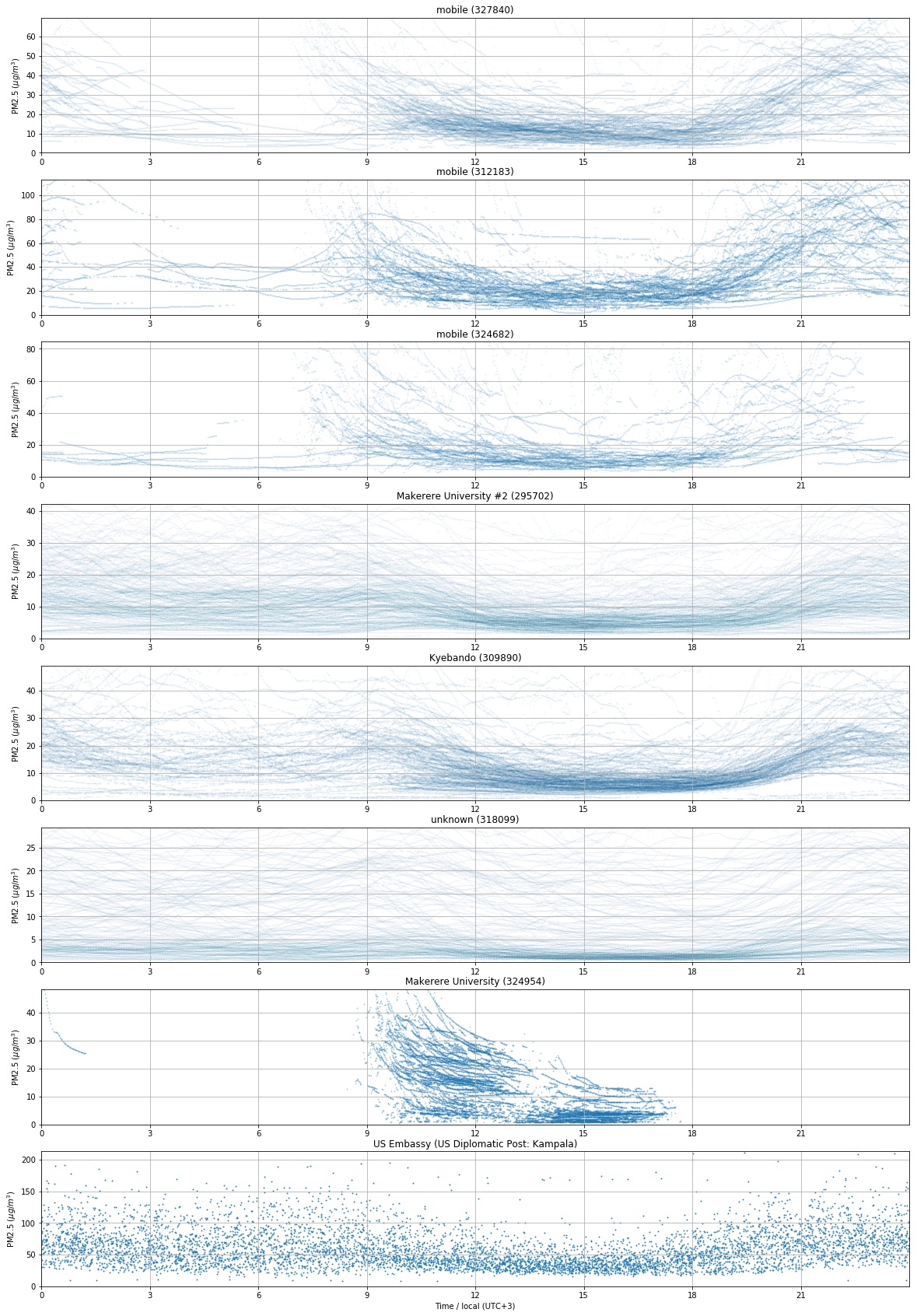
US Embassy sensor
- Provides good, reliable, calibrated data.
- Only tells us about pollution at the Embassy (A).

Methods for estimating pollution
- Land Use Regression
- not probabilistic, typically linear regression, long term avgs
- Ideally requires 40+ sensors... [expensive]
- Dispersion models (include box and Gaussian plume models). Really depend on having an idea where pollution is from.
Hoek, Gerard, et al. "A review of land-use regression models to assess spatial variation of outdoor air pollution." Atmospheric environment 42.33 (2008): 7561-7578.Wu, Jiansheng, et al. "Applying land use regression model to estimate spatial variation of PM2. 5 in Beijing, China." Environmental Science and Pollution Research 22.9 (2015): 7045-7061.
Plan
Can we combine lots of low-cost sensors with a few precision devices to acheive similiar accuracies to a full-scale network?
PART 1: HARDWARE DEVELOPMENT
Project development
Began with trying the Shinyei sensor hooked up to a phone (2014).
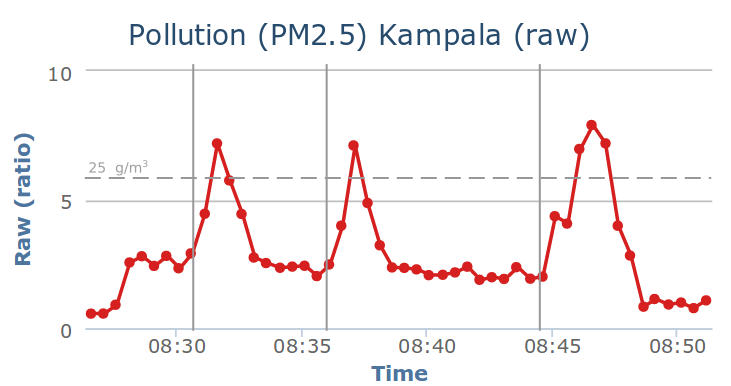
Boda boda deployment
Engineer Bainomugisha. Ssematimba Joel hardware dev.
Switched to OPC sensor from AlphaSense.
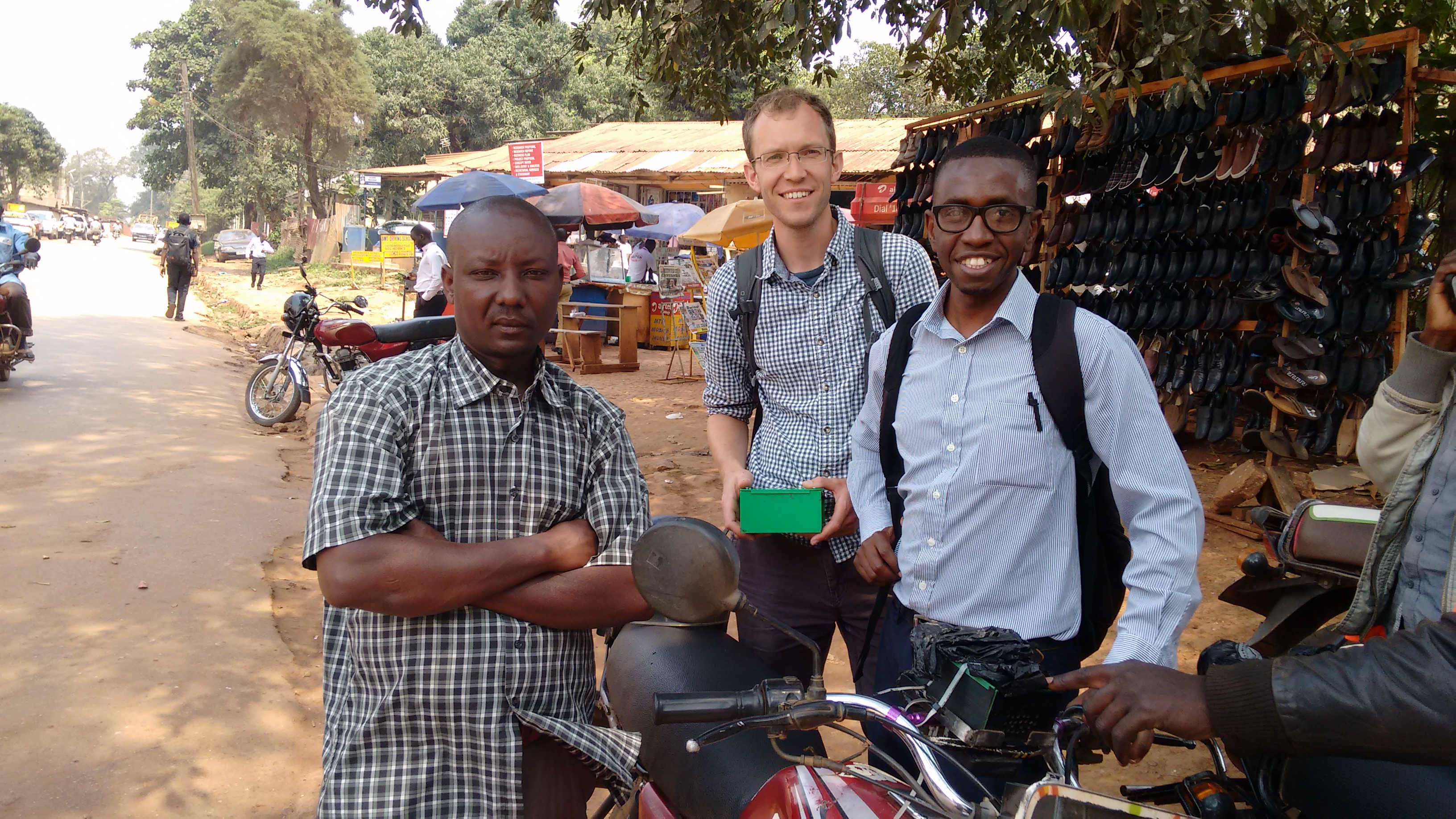
From left to right: Ssekanjako John, the bodaboda driver; me; Engineer Bainomugisha.
Static site deployment

Static site deployment
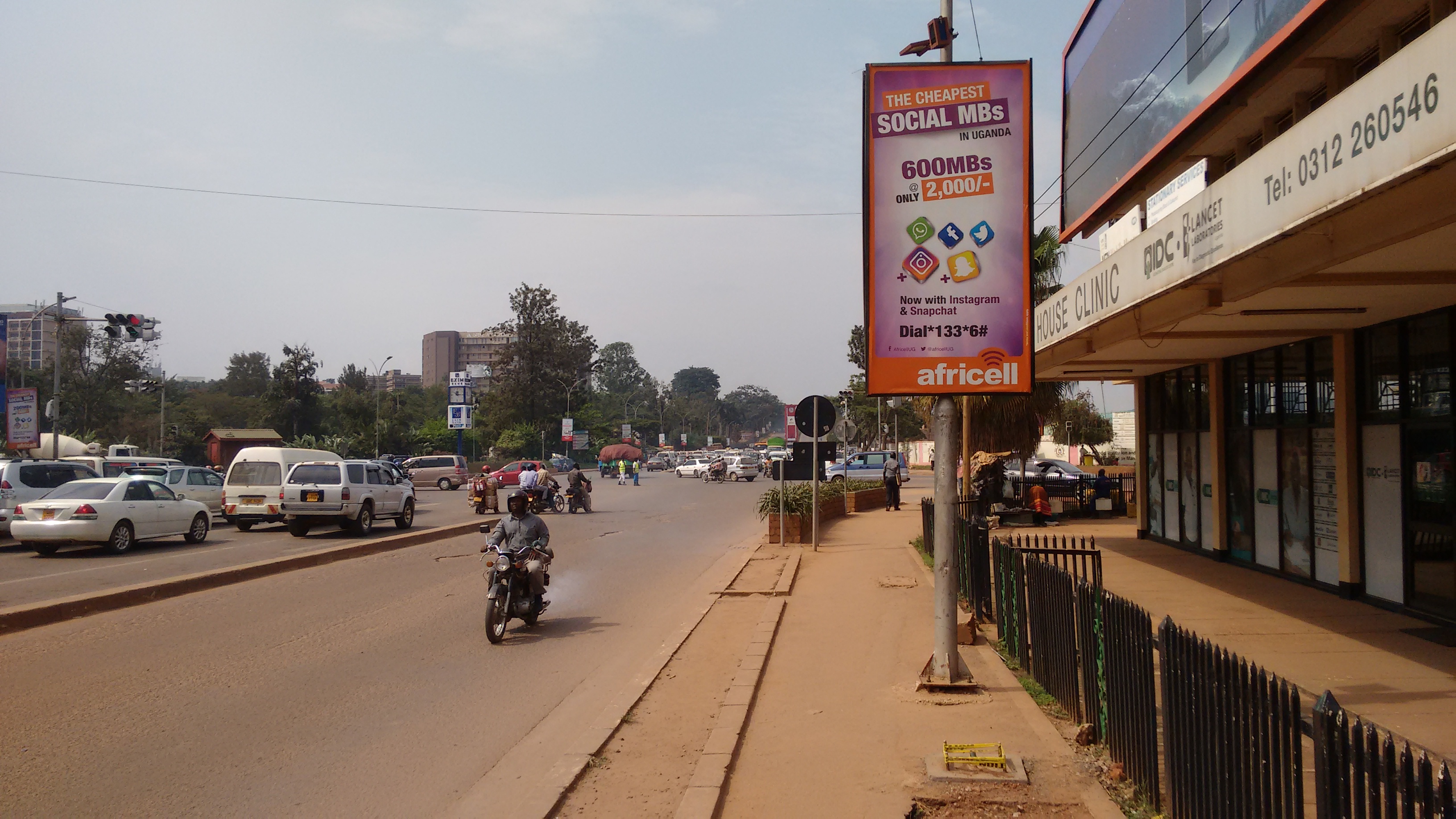
Project development
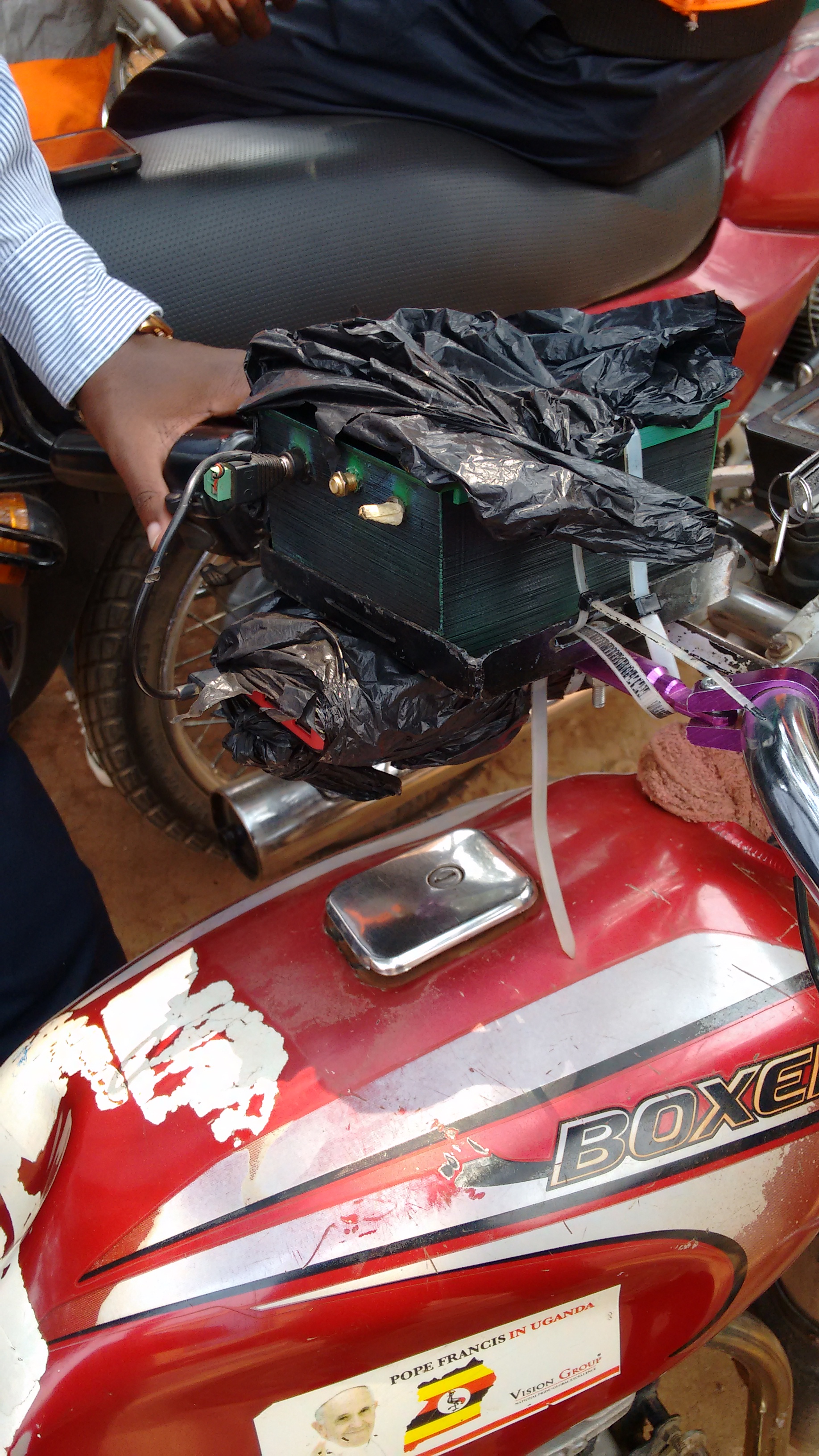
unobtrusive hardware...
Example data
PART 2: COMBINING SENSORS
Combining Sensors
Using a GP model, with inputs:
- latitude, longitude and time
- time-of-day
- distance from large roads (data from OSM)
Multiple output GPs: Make each sensor type one output
(visualisation built by Irene Michalaki at ARM)
Combining Sensors
Sensors aren't necessarily calibrated, but are still correlated
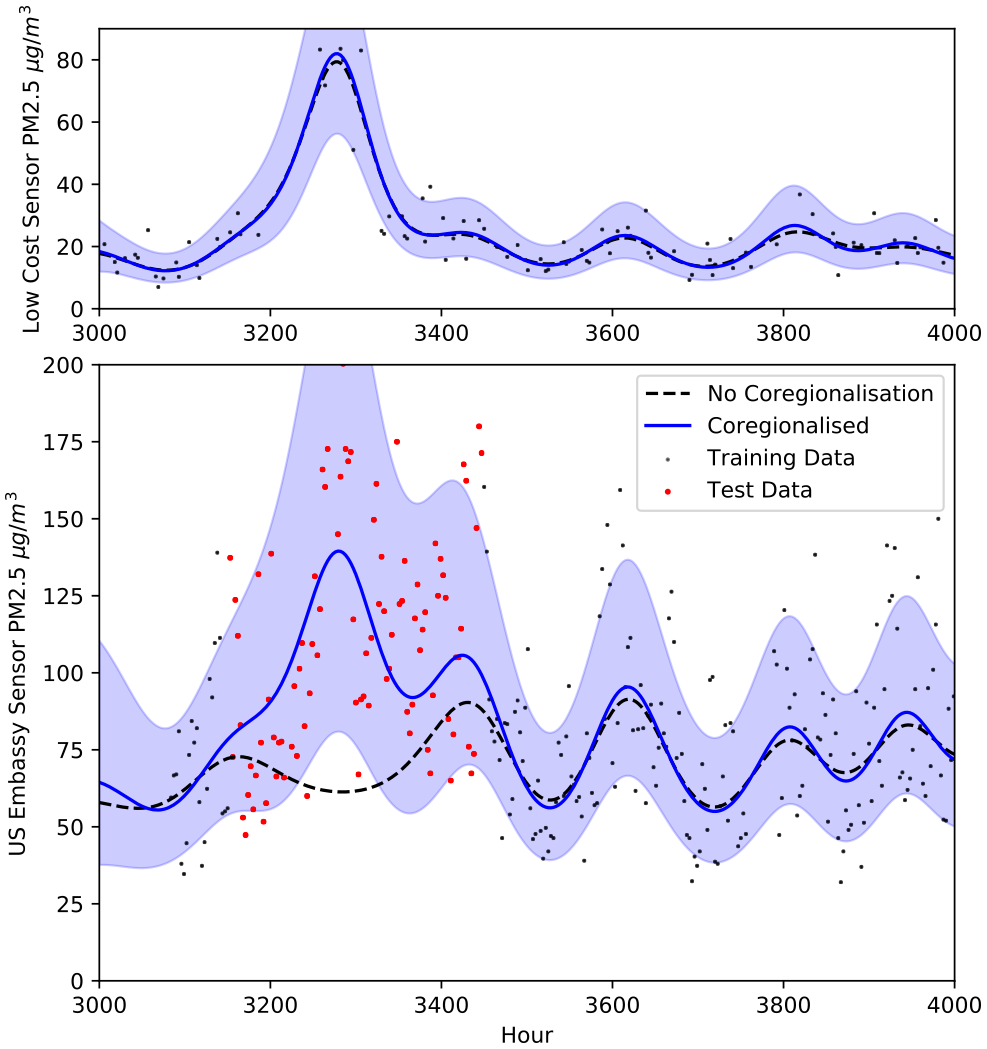
Calibration with Coregionalisation
- Need to consider sensor proximity
- Assume sensors are proportional (rank-one, $\mathbf{w} \mathbf{w}^\top$)
- Toy example: Three sensors. One sensor swaps location.
 Element-wise product (not Kronecker product)
Element-wise product (not Kronecker product)
- Hyperparameters $\mathbf{w}$ only relevant where 'proximity' matrix is non-zero. So need to have sensors co-located to estimate these.
- Need to use CCD or similar to incorporate uncertainty in $\mathbf{w}$.
PART 3: BODA BODAS
Boda bodas
video!
Boda bodas
- Boda-bodas provide spatial detail about pollution
- Might help with calibrating fixed sensors?
- Appear to be providing reasonably 'realistic' data
Boda boda data
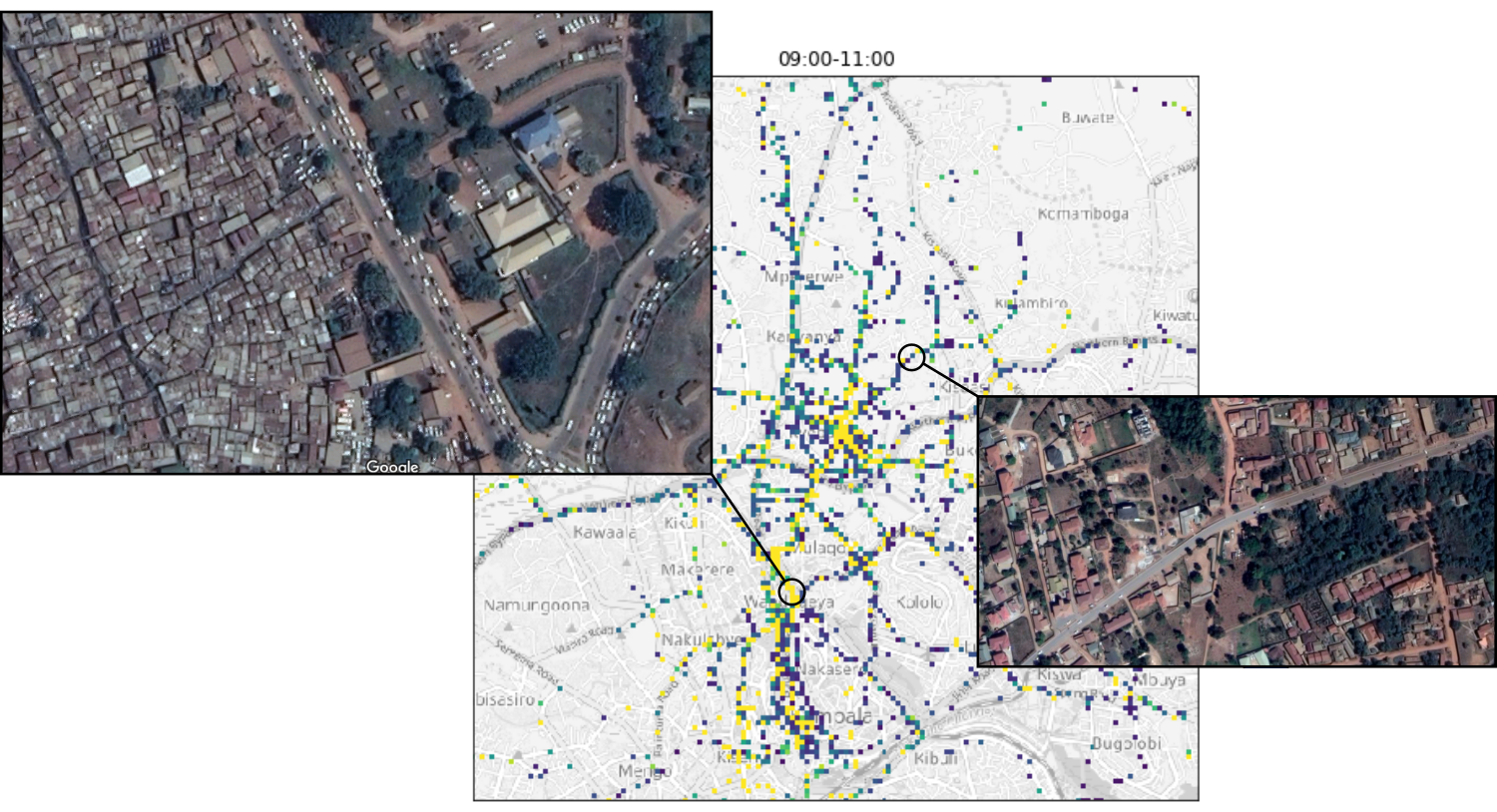
$w$ might change?
- Need very regular calibration (problems with clogging)


- Estimates of $\mathbf{w}$ will need to vary. Model with a GP too?
Future ideas
- Use active learning to select location for bodaboda to visit
- Look at sources of pollution to try to start assigning causality
- Apply differential privacy to ensure boda location remains private
- Correlate with hospital admissions?
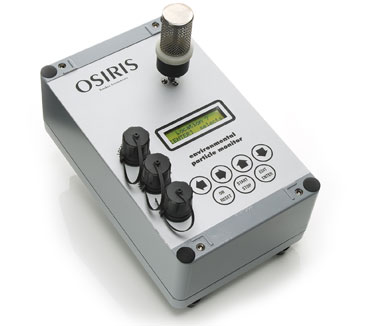 New! The Sheffield Urban Observatory is lending three MCERTS TurnKey OSIRIS OPCs for deployment in Kamapala (and funding 15 low-cost sensors). This will allow us to calibrate the low-cost units.
New! The Sheffield Urban Observatory is lending three MCERTS TurnKey OSIRIS OPCs for deployment in Kamapala (and funding 15 low-cost sensors). This will allow us to calibrate the low-cost units.
Actions/Effects
- Awareness raising - leads to civic response?
- If we get causation - we'll know what to target.
- Baseline necessary for mitigation to be assessed.
- KCCA planning non-motorised area in Old Kampala!

Thanks
DIL Berkeley award, ARM, the Urban Observatory and the EPSRC.

Engineer Bainomugisha; Ssematimba Joel


Pius Kavuma, AI Lab (3d printer!); Irene Michalaki, ARM;
Mauricio Alvarez and Neil Lawrence
References
Schwander, Stephan, et al. "Ambient particulate matter air pollution in Mpererwe District, Kampala, Uganda: a pilot study." Journal of environmental and public health 2014 (2014).
Kirenga, Bruce J., et al. "The state of ambient air quality in Two Ugandan cities: a pilot cross-sectional spatial assessment." International journal of environmental research and public health 12.7 (2015): 8075-8091.
Manchester air pollution averages:
http://www.manchester.gov.uk/download/downloads/id/24305/greater_manchester_air_quality_annual_status_report_asr_2015.pdf
Diurnal peak time in sub-tropical/tropical locations
Latha, K. Madhavi, and K. V. S. Badarinath. "Seasonal variations of PM10 and PM2. 5 particles loading over tropical urban environment." International journal of environmental health research 15.1 (2005): 63-68.
Zhang, Yan-Lin, and Fang Cao. "Fine particulate matter (PM 2.5) in China at a city level." Scientific Reports 5 (2015): 14884.